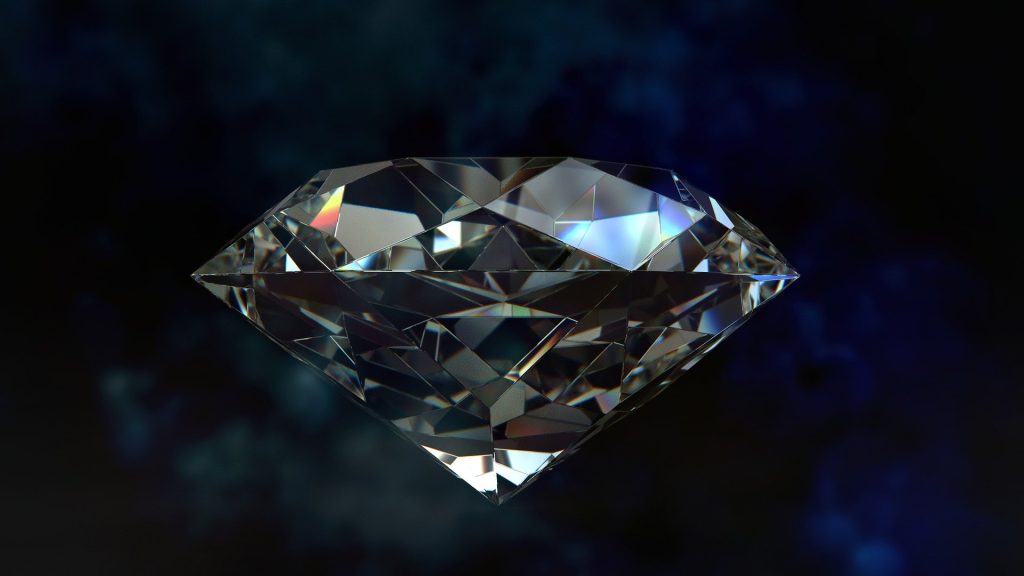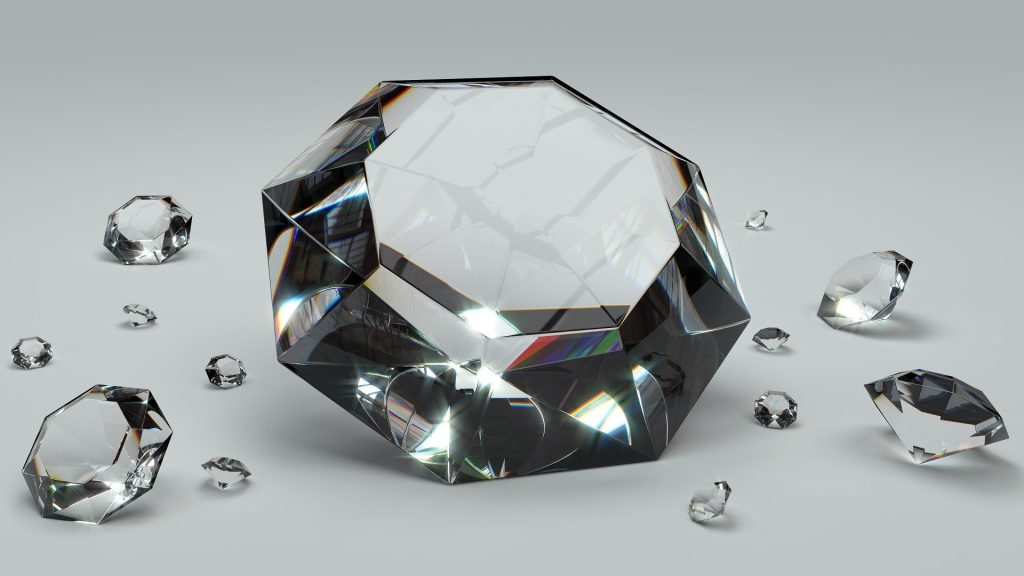If you’re wondering how to grade a diamond, you can consult an expert trained in the process. Some GIA-certified experts will teach you to grade a diamond by color, cut, and clarity. A GIA-certified diamond grading report will tell you how to find the most suitable stone for you. This is an excellent place to start as an educated consumer.
When buying a diamond, it’s essential to know that diamonds are not a perfect match for all eyes. A well-cut diamond will have a solid color and clarity. An expert has carefully graded a GIA-certified stone, so it is worth learning the basics before finalizing it. If you’re unsure about the GIA grading scale, read about the GIA’s grading system.

How To Grade A Diamond
When you need to know the quality of a diamond but don’t have a grading certificate, you can use this method. You can still grade the stone in this situation, but the grades you come up with will be approximate and should be described in terms of grading ranges rather than exact values.
Grading reports, which are an official grading of a diamond’s attributes, are included. Have you ever thought about how diamonds are graded? Or who is responsible for grading them? We’ll look at how diamond experts rate the 4Cs (color, cut, clarity, and carat) to determine a diamond’s quality in this article.
Carat
Carat is a simple measurement of weight (but it can give you a general notion of a diamond’s size). Many people confuse it with the size of a diamond. When weighing diamonds to the fifth decimal point, grading organizations employ an exceedingly accurate electronic micro-balance machine.
Color
A white diamond’s color is a measurement of how colorless it is. Diamonds are graded on a scale of D (colorless) to Z (colorful) (lightly colored). To identify the color of a diamond, diamond graders set it in a regulated viewing environment and compare it to “color masters,” which are recordings of the color of each diamond color grade.
Because color is a subjective grading that requires the use of the human eye, specific organizations, such as the GIA, have numerous graders independently assess each diamond. The diamond is only given a grade if these several graders agree.
Clarity
Clarity is a measurement of a diamond’s internal and exterior flawlessness. Inclusions are internal faults, while blemishes are exterior flaws. Entirely flawless diamonds are highly unusual, yet many diamonds have faults that can only be seen under magnification.
Grading organizations examine diamonds under magnification for inclusions and exclusions and any signs of clarity treatments to determine their clarity.
Because clarity, like color, is a subjective rating, certain grading bodies, like the GIA, use at least two graders to determine clarity. Before the diamond can be formally rated, the graders must agree on its clarity.
Cut
The cut is a grading system that determines how well a diamond was cut, which significantly impacts how well it captures light. On a scale of excellent to terrible, the cut is rated. Diamond graders calculate the proportions of each diamond facet before determining how these proportions affect the diamond’s ability to capture light when examining cuts.
The cut is one of the most challenging 4Cs to assess since it requires a high level of knowledge and rigorous attention to detail. The data graders obtain must be compared against millions of diamond cut proportions when determining cut grade. Diamond grading organizations have strict criteria and methods for evaluating cut grades because it is a complex operation.
Who Grades Diamonds?
Let’s start by discussing who evaluates diamonds. Diamond grading institutions such as the GIA (Gemological Institute of America) and EGL USA grade diamonds (European Gemological Laboratories). Diamonds are tested and evaluated for quality using specialist equipment. Three Cs (cut, color, and clarity) are somewhat subjective. However, carat is an objective measurement of a diamond’s weight. Certified gemologists who have been taught to use the correct equipment to study diamonds and then give them an accurate grading are the experts who grade diamonds at these established organizations.
The Most Common Mistake With Diamond Clarity
When purchasing a diamond, we always stress focusing most of our budget on the features that will be seen the most (such as cut quality and carat weight) and only spend as much on the other four Cs as necessary (clarity and color).
Buying a diamond with a clarity grade that is too high to appreciate to get a “good investment” is the most common mistake individuals make when buying diamonds. As a result, money is wasted on a feature that appears excellent on paper but has little impact on the appearance of a diamond in real life.
Many inclusions distinguish an FL or IF (flawless or internally flawless) clarity rating from a VVS1 clarity grade and are invisible to the naked eye. This means that concentrating on a diamond’s clarity grade rather than its look will make you spend money that could be better spent on a larger diamond.
What Is GIA Color Scale?
The GIA uses a simple color grading scale. There are five colors in a clarity plot: red represents inclusions, green represents surface flaws, and green indicates no noticeable yellow tint. Although the GIA color scale is the most accurate way to grade a diamond, it’s not always the best method. This is why a person should only trust a certified gemologist, but not any random person.
In addition to the color, the clarity of a diamond is also a significant factor in determining its value. A GIA-certified diamond will be free of noticeable inclusions. A GIA-certified stone will be within the D-E-F-G-H range unless highly discolored. To better understand how to grade a gemstone, consult an expert. Besides GIA-certified gemologists, jewelers can also consult the American Society of Appraisals (GIA-certified) or check the certification of an individual company.
What Makes A Diamond Sparkle?
Diamonds shine because, like a prism, they reflect and magnify light when cut perfectly. If a diamond’s facets (the tiny cuts all over the stone) aren’t precisely aligned, light rays can reflect sideways or downward rather than back at the viewer. You’re losing vital, gorgeous shine and generating dead areas in your stone due to the loss of light.
What Is The Color Of A Diamond?
A diamond’s “color” refers to its pure whiteness or degree of yellow hue. Color is graded from D to Z on the diamond grading scale. Colorless diamonds with color-graded D-F are similar to Brita water compared to tap water. Colors G through J are “near-colorless.” G and H have a faint yellow hue (which is almost noticeable in well-cut stones “face-up”), but I and J have considerable warmth even when facing up. Diamonds with a hue that is warmer than J will seem yellow when seen face up.
How Can I Grade Diamond Color Like A Jeweler?
So far, the only diamond quality graded “facing down” is color. That is to say, don’t be afraid to flip that baby over! Color grading in diamonds is done so that the sparkle does not distract you. Jewelers utilize white backgrounds and reference diamonds in addition to upside-down grading to determine whether the unknown stone is whiter or yellower. To put it another way, we can’t identify the hue of a diamond just by looking at it.
However, the face-up appearance of a diamond is more significant to you. Look at a diamond face up and think about your ring setting to see if it’s “white” enough for you (yellow rings will mask some yellow diamond tint). Make sure your chosen diamond looks “white” compared to the ring’s metal and any other diamonds in the setting (normally G-H in color).
Conclusion
A diamond’s clarity is one of the most important factors to consider when deciding on a purchase. The clarity grade indicates if there are any visible flaws, including blemishes, that detract from the stone’s beauty. In other words, a low-quality diamond may appear cloudy and lackluster. A good clarity grade is a perfect ten on the GIA scale.
A diamond’s cut grade is also essential in determining its value. A good quality diamond will be free of inclusions. A good-quality diamond will be clear of visible blemishes and will sparkle brightly when held to the light. Likewise, a high-quality diamond will sparkle brightly. But a diamond with an I1 clarity level will have no luster. An I1 diamond will be free of flaws.







